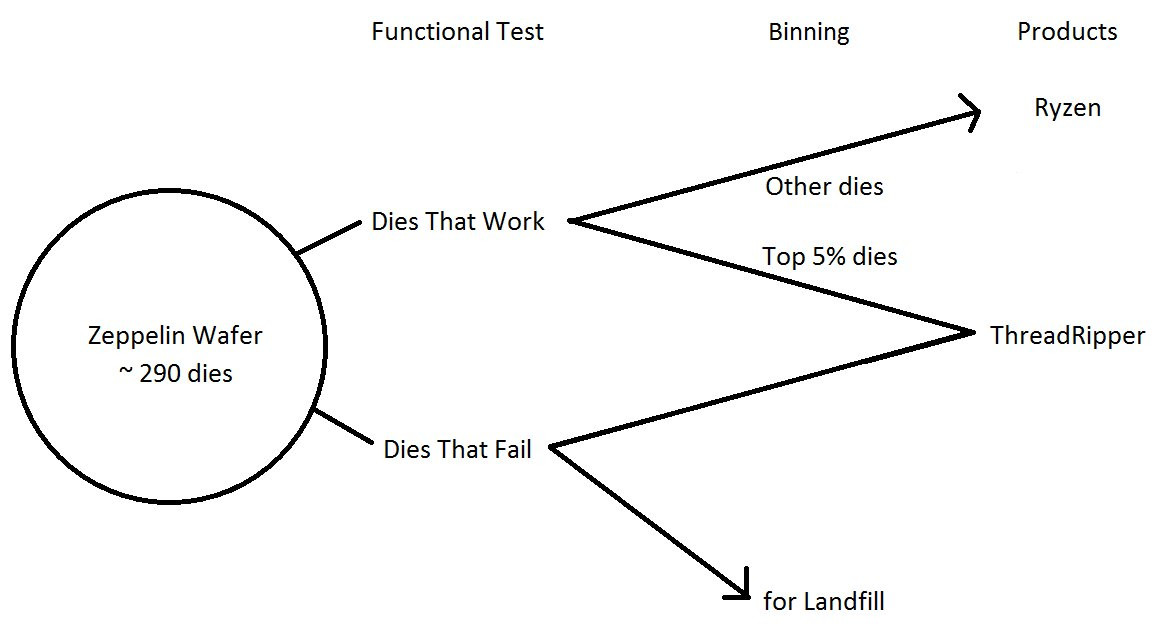Raevenlord
News Editor
- Joined
- Aug 12, 2016
- Messages
- 3,755 (1.18/day)
- Location
- Portugal
| System Name | The Ryzening |
|---|---|
| Processor | AMD Ryzen 9 5900X |
| Motherboard | MSI X570 MAG TOMAHAWK |
| Cooling | Lian Li Galahad 360mm AIO |
| Memory | 32 GB G.Skill Trident Z F4-3733 (4x 8 GB) |
| Video Card(s) | Gigabyte RTX 3070 Ti |
| Storage | Boot: Transcend MTE220S 2TB, Kintson A2000 1TB, Seagate Firewolf Pro 14 TB |
| Display(s) | Acer Nitro VG270UP (1440p 144 Hz IPS) |
| Case | Lian Li O11DX Dynamic White |
| Audio Device(s) | iFi Audio Zen DAC |
| Power Supply | Seasonic Focus+ 750 W |
| Mouse | Cooler Master Masterkeys Lite L |
| Keyboard | Cooler Master Masterkeys Lite L |
| Software | Windows 10 x64 |
Much has been said regarding AMD's Threadripper CPUs, particularly when it comes to how they are manufactured. At first, we thought Threadripper was actually EPYC in disguise, due it having what appeared to be four full-fledged 8-core modules - the same design as AMD's server-bound 32-core EPYC chips. The presence of gold-plating under all four dies seemed to confirm that these were in fact four full Threadripper dies, instead of two dies and two spacers (as AMD's statements led us to believe) for even IHS pressure on the four dies, instead of the uneven pressure that would result from the chip only having two physical dies present.
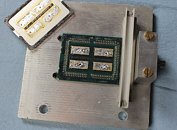
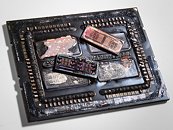
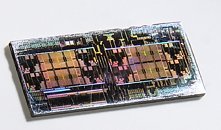
It seems the truth is, as always, somewhere in-between. On Twitter, James Prior came forward to shed some light on the issue, clarifying what exactly is going on and justifying AMD's usage of "dummy" and "inactive" nomenclatures. First up, no, readers: there is virtually no way to reactivate those unused dies. As James Prior himself said, "Threadripper is not a Epyc processor. Different substrate, different dies. 2 dies work, other 2 have no path to operation. Basically rocks." Those are some expensive pieces of rock, for sure. However, AMD's choosing of "dummy" instead of inactive seems correct here: "(...) exactly why they're not described as inactive, but dummy. Doesn't matter if they were dead, or active, they're not going to work."
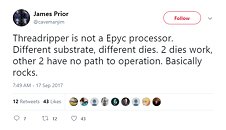

Since inactive implies the capability of reactivating, yeah, dummy sounds about right. AnandTech's Ian Cutress' responded to James Prior's post with a general workflow of AMD's Threadripper dies, based on prevous AMD information and these statements from James, basically embodying what is going in our minds. See it in the image below.
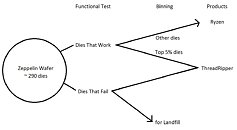
View at TechPowerUp Main Site



It seems the truth is, as always, somewhere in-between. On Twitter, James Prior came forward to shed some light on the issue, clarifying what exactly is going on and justifying AMD's usage of "dummy" and "inactive" nomenclatures. First up, no, readers: there is virtually no way to reactivate those unused dies. As James Prior himself said, "Threadripper is not a Epyc processor. Different substrate, different dies. 2 dies work, other 2 have no path to operation. Basically rocks." Those are some expensive pieces of rock, for sure. However, AMD's choosing of "dummy" instead of inactive seems correct here: "(...) exactly why they're not described as inactive, but dummy. Doesn't matter if they were dead, or active, they're not going to work."


Since inactive implies the capability of reactivating, yeah, dummy sounds about right. AnandTech's Ian Cutress' responded to James Prior's post with a general workflow of AMD's Threadripper dies, based on prevous AMD information and these statements from James, basically embodying what is going in our minds. See it in the image below.

View at TechPowerUp Main Site



